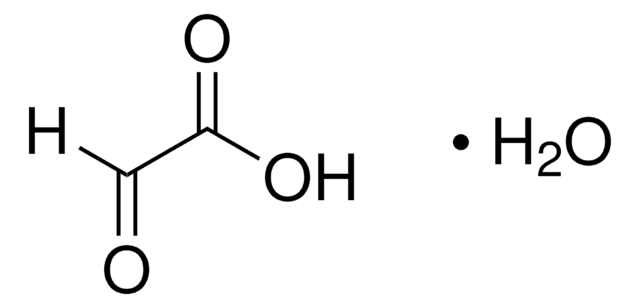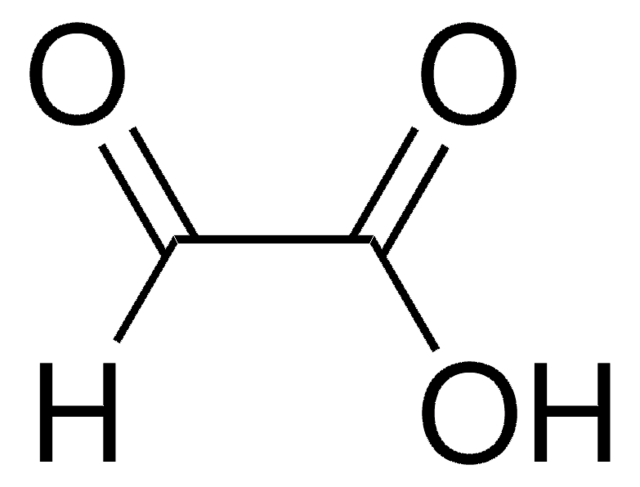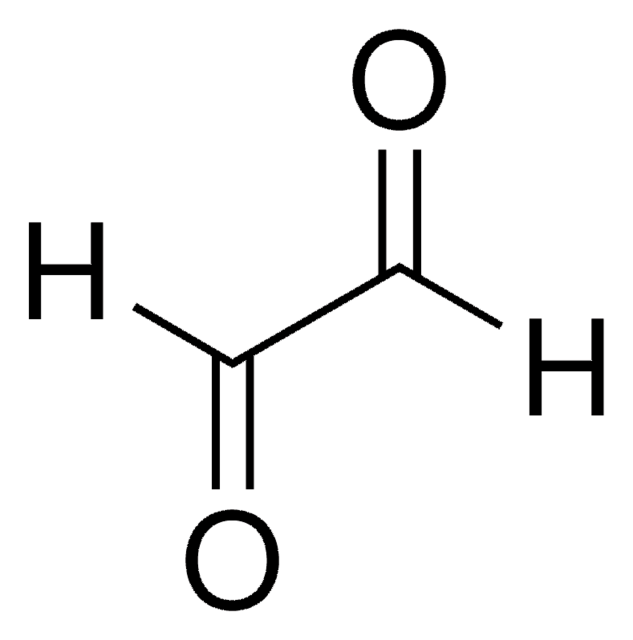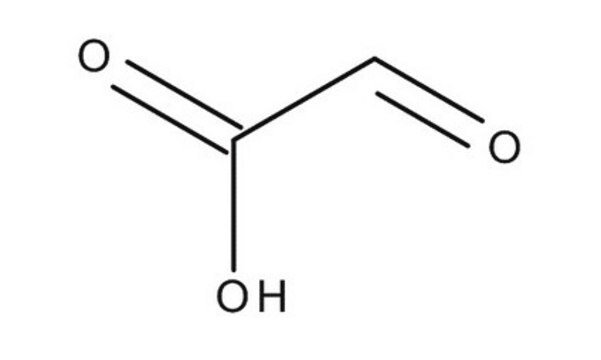G4502
Sodium glyoxylate monohydrate
≥93%
Synonym(s):
Glyoxylic acid sodium salt monohydrate, Oxoethanoic acid sodium salt
Sign Into View Organizational & Contract Pricing
All Photos(3)
About This Item
Linear Formula:
HC(O)COONa · H2O
CAS Number:
Molecular Weight:
114.03
Beilstein:
4003755
MDL number:
UNSPSC Code:
12352100
PubChem Substance ID:
NACRES:
NA.22
Recommended Products
Quality Level
Assay
≥93%
storage temp.
−20°C
SMILES string
O.[Na+].[O-]C(=O)C=O
InChI
1S/C2H2O3.Na.H2O/c3-1-2(4)5;;/h1H,(H,4,5);;1H2/q;+1;/p-1
InChI key
VPWPWKBHCGJTTQ-UHFFFAOYSA-M
Looking for similar products? Visit Product Comparison Guide
General description
Sodium glyoxylate monohydrate, also known as Glyoxylic acid sodium salt monohydrate, is often utilized in the reductive amination of glyoxylate/pyruvate intermediates and ketoacids with hydroxylamine.
Application
- Proteomic characterisation of polyethylene terephthalate and monomer degradation by Ideonella sakaiensis.: This paper details the degradation of polyethylene terephthalate and its monomers, highlighting the role of sodium glyoxylate monohydrate as a byproduct in biodegradable polymer production and its implications for environmental sustainability (Poulsen & Nielsen, 2023, Poulsen & Nielsen, 2023).
Sodium glyoxylate monohydrate is used as an intermediate in the transamination reaction in the formation of unstable keto esters during the synthesis of indolo [3,2-a] carbazoles.
Storage Class Code
11 - Combustible Solids
WGK
WGK 3
Flash Point(F)
Not applicable
Flash Point(C)
Not applicable
Personal Protective Equipment
dust mask type N95 (US), Eyeshields, Gloves
Choose from one of the most recent versions:
Already Own This Product?
Find documentation for the products that you have recently purchased in the Document Library.
Customers Also Viewed
Rossana Canavesi et al.
Journal of pharmaceutical and biomedical analysis, 173, 154-161 (2019-05-28)
In Anopheles gambiae, the most efficient vector of the malaria parasite Plasmodium falciparum, 3-hydroxykynurenine is endowed with a toxic potential. In adult mosquitoes, the excess of 3-hydroxykynurenine is removed by a specific transaminase (3-hydroxykynurenine transaminase, 3-HKT) which converts the compound
Our team of scientists has experience in all areas of research including Life Science, Material Science, Chemical Synthesis, Chromatography, Analytical and many others.
Contact Technical Service










